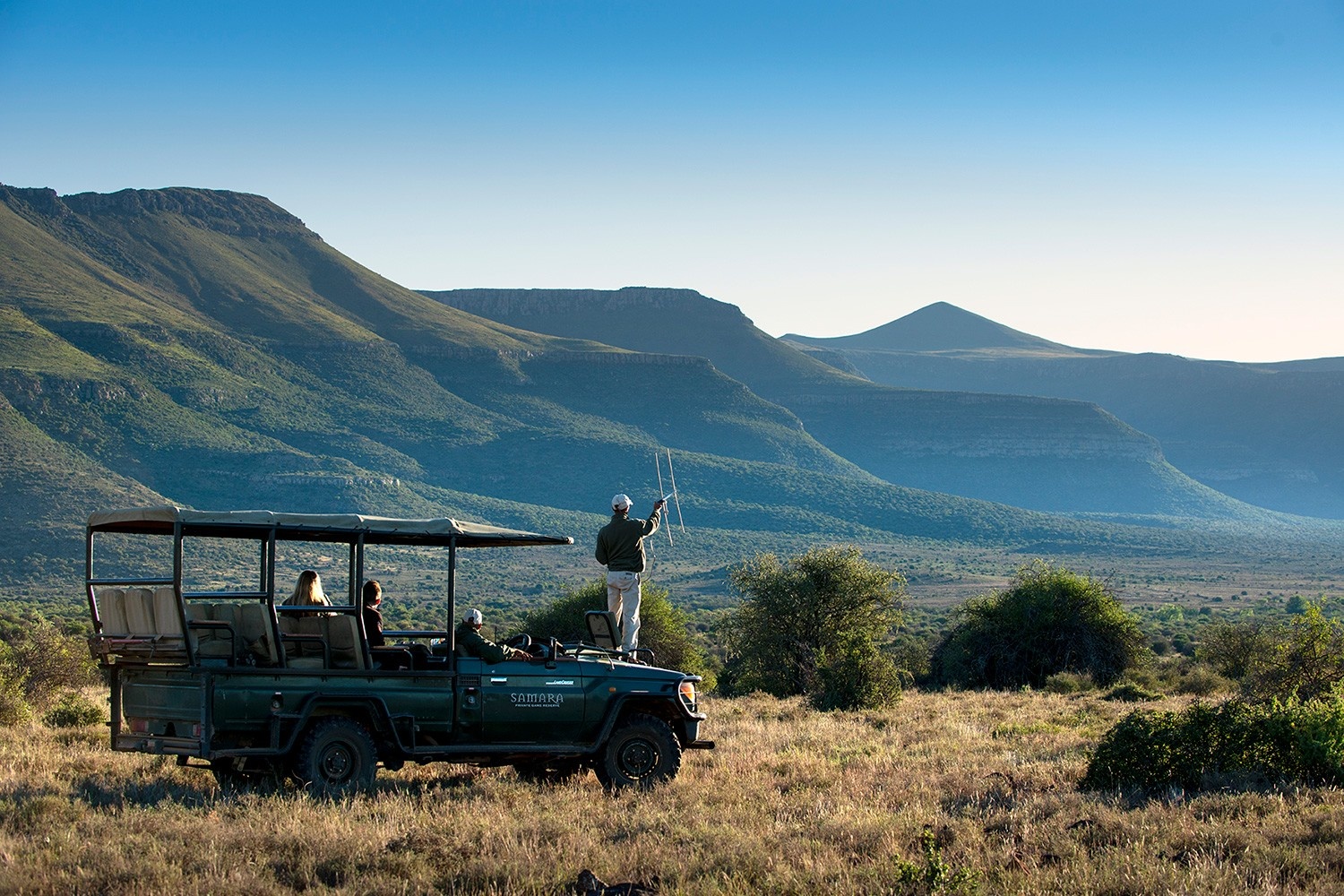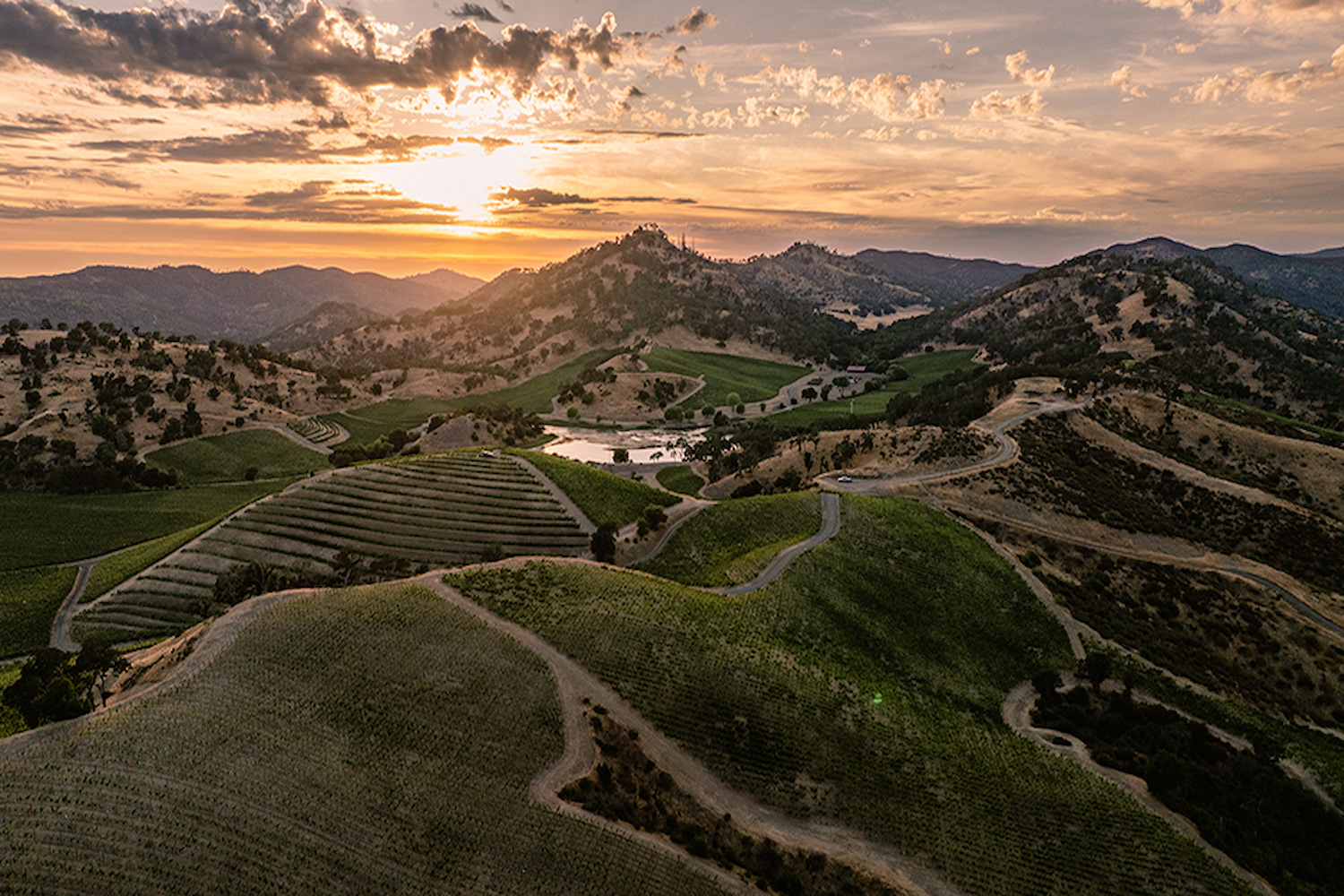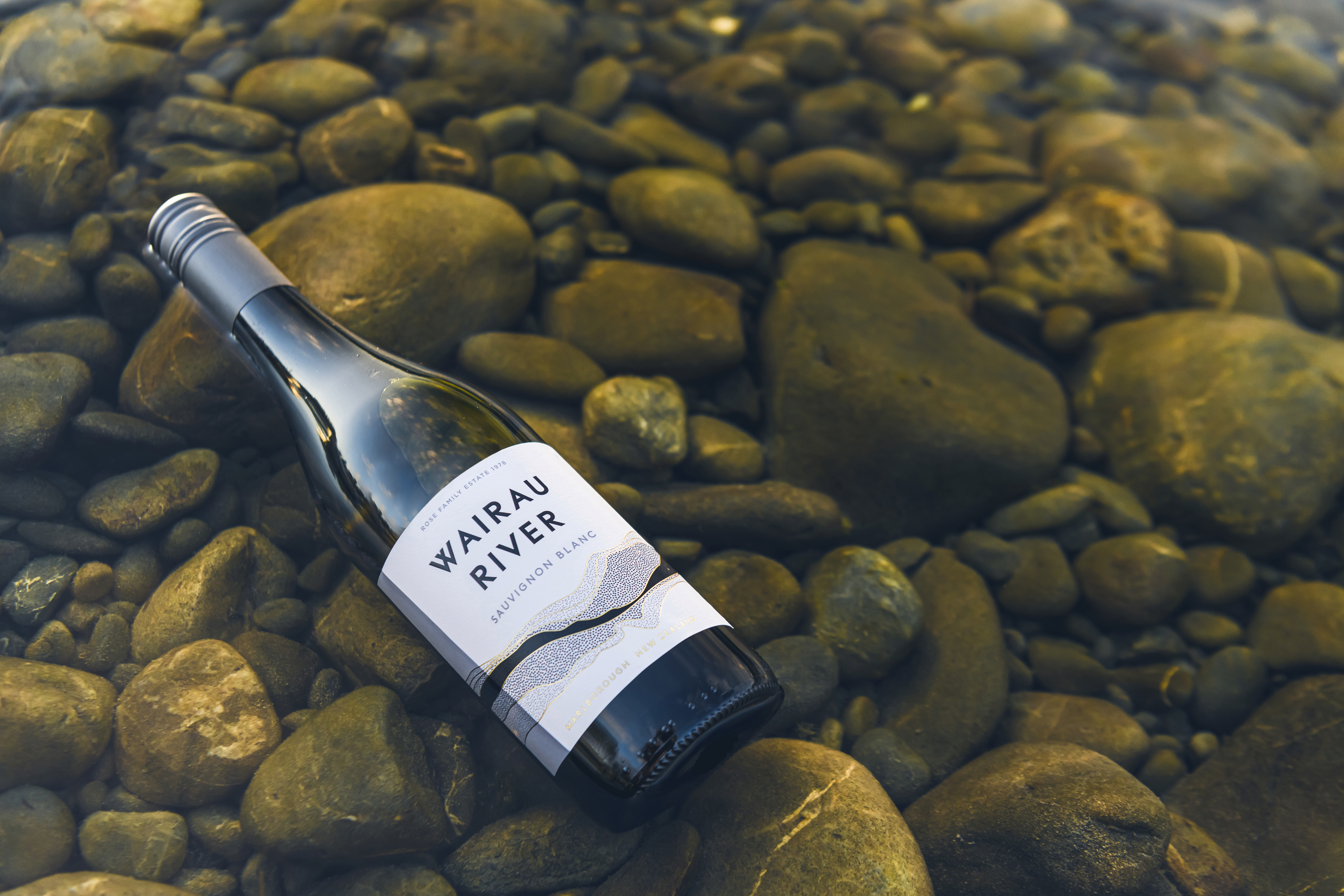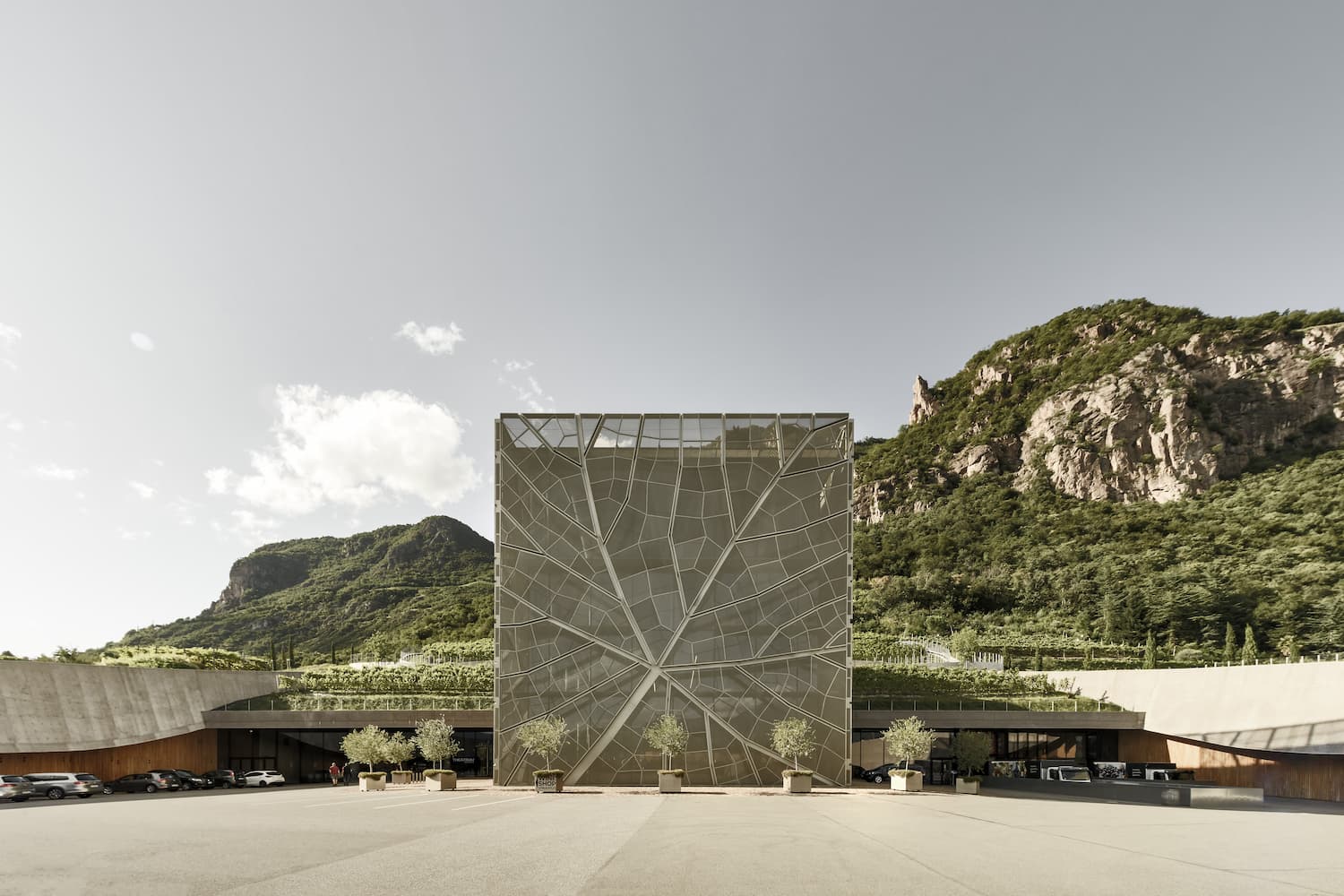North Stars:

Community Support

Wildlife Ecosystems

Heritage Value
“Safaris here recall the golden age of exploration, when vistas were blisfully free of 4x4s lined up to spot wildlife.”
From Kruger National Park to the Okavango Delta, some of Africa’s most popular spots to go on safari can be found on the continent’s southern tip. With these popular parks stealing the spotlight, travelers overlook smaller, lesser-known sanctuaries and game reserves. But for those in the know, they’re in for a treat: without the crowds of big-name parks, safaris here recall the golden age of exploration, with vistas unmarred by lines of 4x4s queuing to spot wildlife.
Smaller parks also boast more ambitious conservation work, which visitors can see in action. While these places may not have the name recognition of larger safari destinations, they offer something deeper. Each one is a work in progress: the repopulation of wildlife, the healing of ecosystems, and communities redefining their relationship with nature. Visiting them is more than journeying into the wild; it’s a glimpse of what the future of conservation in Southern Africa could and should look like.
From community-led wetlands to predator reintroductions, these seven places offer a front-row seat to a region working hard to reclaim its ‘wild.’
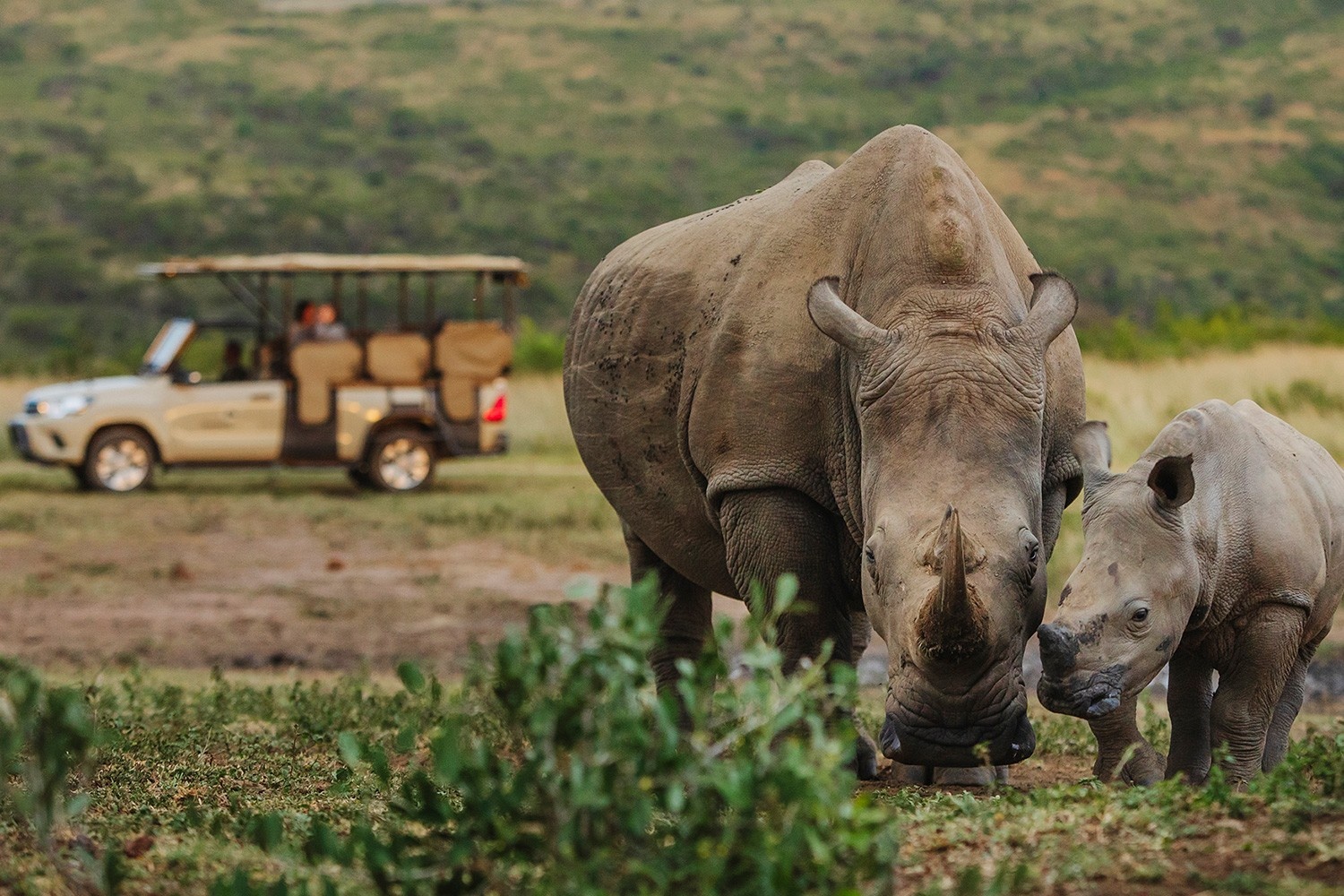
Rhinos at Hluhluwe-iMfolozi. Courtesy of Isibindi Collection.
1. Hluhluwe-iMfolozi Park: South Africa
Decimated by poaching, Africa’s rhinos have been one of the main focal points of the continent’s conservation efforts. This South African reserve, located five hours south of Kruger National Park, is where it all began.
The oldest proclaimed reserve in Africa, Hluhluwe-iMfolozi, is where rhino conservation got its start back in the 1960s, when Operation Rhino helped bring the country’s white rhino population back from the brink of extinction. Today, every single southern white rhino living in the wild can be genetically traced back to this park, which is known as the “home of the rhino.”
With one of the densest populations of black and white rhinos on the continent, rhino sightings are reason number one to go on safari here. But you can also tick Big Five sightings off your list, and the park is among the top places to view the shy and elusive nyala. Birdwatchers can spot more than 400 species, many of which are endangered and protected by the park.
How to Explore: Self-driving in the reserve is popular and offers flexibility, while guided tours provide expert insights. Staying overnight at Rhino Ridge allows for multiple game drives along with more immersive experiences, like guided safari walks.
Where to Stay: Watch wildlife gather at a nearby watering hole and soak up the immensity of the landscape at Rhino Ridge Safari Lodge, a luxury property set on an elevated hillside on the park boundary. Stylish rooms feature glass walls to welcome in the vista, and wooden outdoor decks come with multiple seating areas to sit and soak up the view. As a part of the Isibindi Africa Lodges portfolio, Rhino Ridge helps support the brand’s initiatives like building solar farms, empowering neighboring communities, and eliminating single-use plastics from lodge operations.
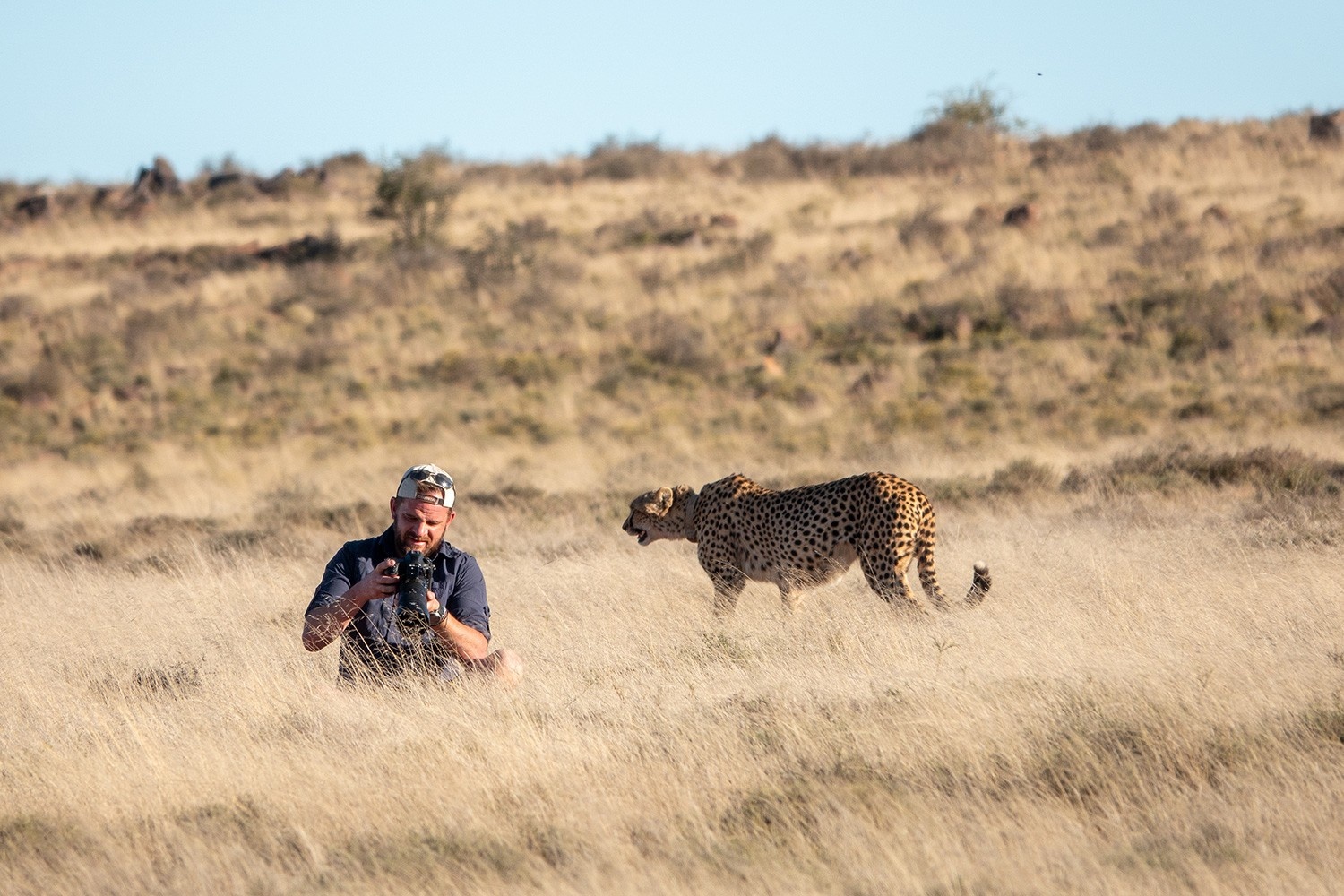
Cheetahs at Samara Karoo. Courtesy of Rowin Benadie Photography.
2. Samara Karoo Reserve: Greater Karoo, South Africa
While it’s now practiced throughout the world, back in the 1990s, the idea of rewilding was a radical one. But that was the vision of Sarah and Mark Tompkins: to take depleted and degraded farmland and restore it to its natural glory so that native wildlife could once again return. Starting in 1997, the couple began buying up adjoining farms in the Greater Karoo area of southern South Africa, eventually stitching together nearly 68,000 acres. That land is now Samara Karoo, a private game reserve and leading rewilding project.
After a 125-year absence, cheetahs can again be seen prancing or speeding across the plains after being reintroduced in 2004. Nearly driven to extinction, the Cape Mountain zebra roams freely here, and endangered blue cranes — the national bird of South Africa — soar through the skies. And for safari-goers hoping for a Big Five sighting, they’ll have good odds here thanks to the reserve successfully reintroducing all five species to the area.
But rewilding extends beyond fauna; along with reintroducing species, the Tompkins’ rehabilitation work includes soil restoration, replanting native vegetation, and implementing water systems.
How to Explore: Game drives and walking in the plains are a great way to experience Samara, and being a private reserve, this is done without the crowds of public reserves and national parks. The reserve also offers a unique Cheetah Trail, a three-day, four-night, slackpacking experience, walking 6 – 10 miles a day in search of the park’s famous speedy felines.
Where to Stay: Three intimate lodges welcome a maximum of 40 guests, and for an off-grid experience, the Plains Camp offers glamping in four tented suites with stunning views over the reserve.
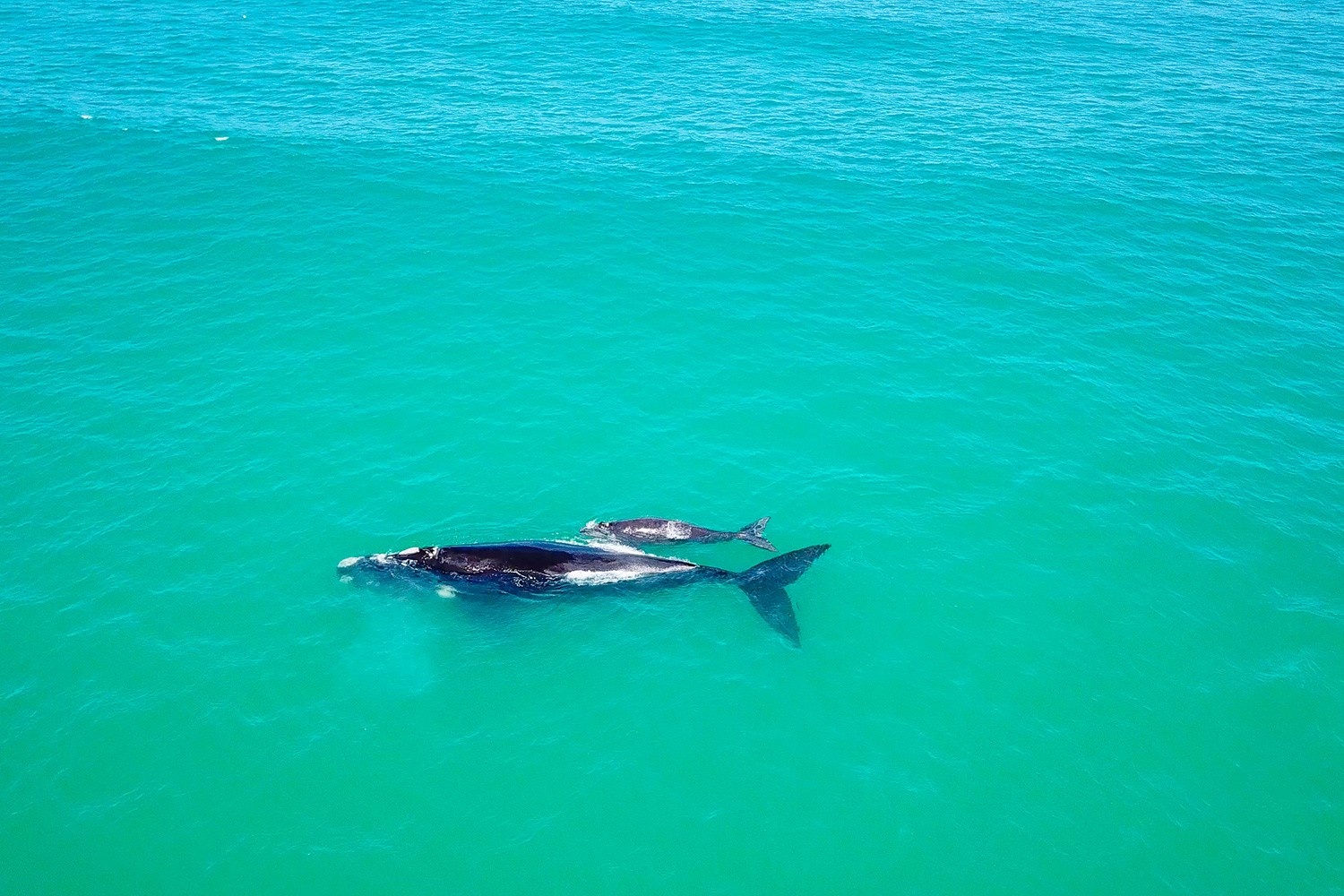
Whales at De Hoop. Courtesy of De Hoop Collection.
3. De Hoop Nature Reserve: Western Cape, South Africa
From the smallest floral kingdom on the planet to massive southern right whales, De Hoop Nature Reserve introduces travelers to some of South Africa’s largest and tiniest natural treasures. Sitting at the tip of the continent, the government-operated reserve and UNESCO World Heritage Site encompasses 130 square miles of sandy beaches, rocky coastline, and fynbos shrubland, plus an additional three nautical miles out to sea as the De Hoop Marine Protected Area.
On land, visitors can spy rare Cape Mountain zebras and bontebok antelopes — two species nearly wiped out by hunting and the destruction of their natural habitat due to farmland expansion — while on coastal hikes or mountain biking rides. Along with wildlife, the reserve protects part of the Cape Floral Kingdom, an incredibly biodiverse floristic kingdom that is the smallest of its kind and home to an astonishing 9,000 plant species.
But arguably, most people come to De Hoop hoping to catch a glimpse of southern right whales — one member of South Africa’s Marine Big Five. In winter and spring, this coastline becomes a nursery for these gentle giants, who voyage up from the waters of Antarctica to breed. Thanks to the protected waters offshore, the whales have a safe sanctuary to birth and rear their young, within view of visitors who can spot the whales on land-based hiking routes like the Cape Nature Whale Trail.
How to Explore: From Interpretive Marine Walks led by expert guides, to birdwatching excursions and boat trips in the Ramsar-designated wetland, there is a range of land and water-based activities here. The reserve also has many hiking paths and mountain biking routes, as well as roads for game drives.
Where to Stay: The buildings at the De Hoop Collection have a rich history, with some dating back to the 1800s. There’s a wide variety of accommodation options, from affordable self-catering chalets and cottages to more luxurious fully catered suites and the restored original manor house.
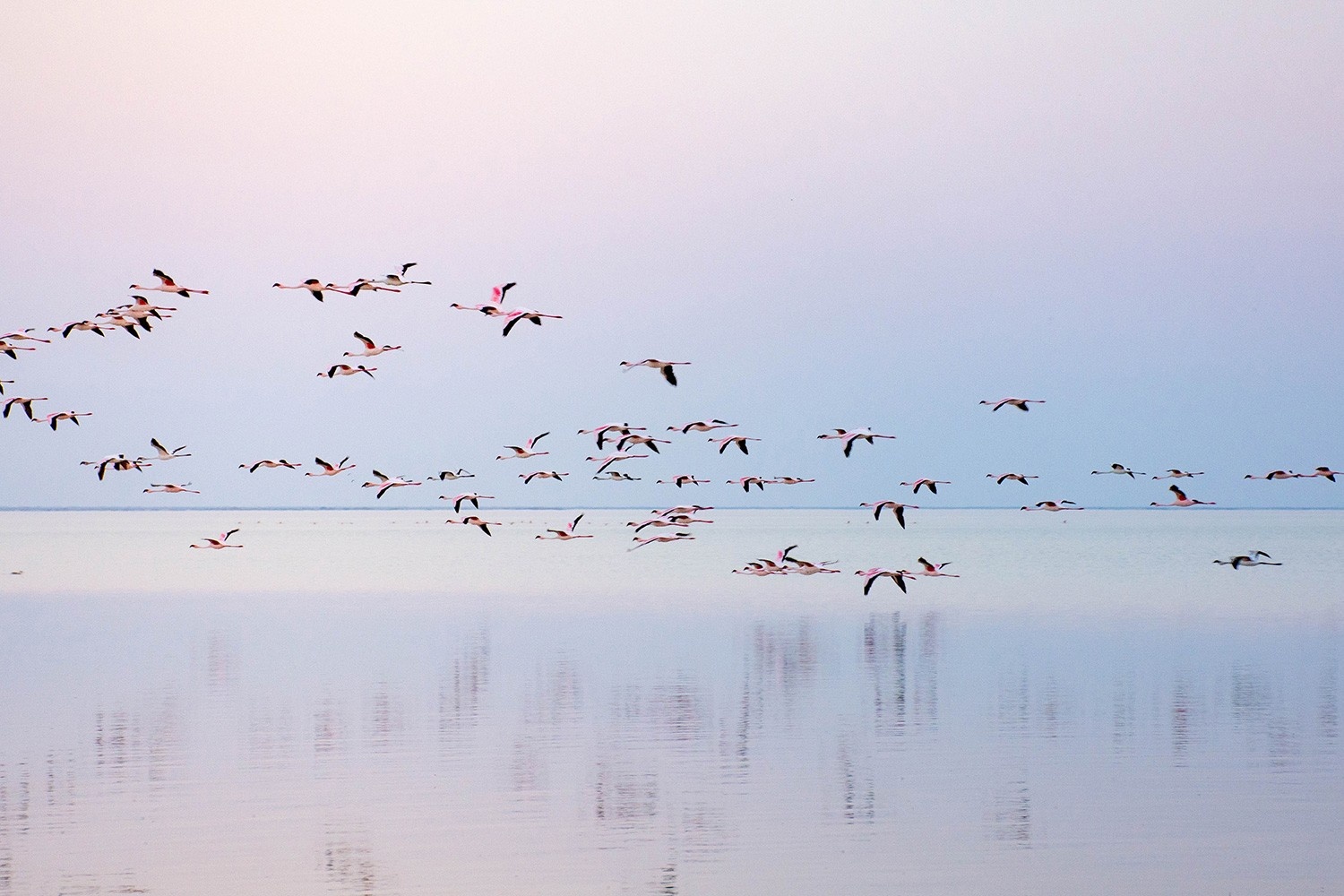
Flamingos at Nata Bird Sanctuary. Courtesy of Nata Lodge.
4. Nata Bird Sanctuary: Nata, Botswana
Run by locals from nearby villages, Botswana’s Nata Bird Sanctuary is an amazing example of community-led responsible tourism enterprises and balancing the needs of Africa’s animal and human inhabitants. Protecting over 165 species of birds, the sanctuary provides income and employment opportunities to surrounding communities. Thanks to its work in conservation and community support, the sanctuary — which was the first community-based conservation initiative in the country — received the Tourism for Tomorrow Award for the Southern Hemisphere the very same year it opened in 1993.
Covering part of the vast Sua Pan, a topographical depression that transforms into wetlands after the rainy season, the 89-square-mile sanctuary is perhaps most famous for being one of only three flamingo nesting sites on the entire continent. Just like the birds themselves, visitors flock here to take in the great crowds of greater and lesser flamingos, as well as other bird species like pelicans and antelopes, jackals, zebras, and hyenas.
How to Explore: Navigate the sanctuary’s network of tracks on a self-driving adventure, stopping to enjoy panoramic views of the flamingos and the surrounding salt pans at look-out towers and viewpoints. If you want to see the flamingo flocks, time your visit for the wet season between November to March, but other birds and wildlife can be seen year-round.
Where to Stay: Stay at nearby Nata Lodge for easy access and guided tours and trips into the pans. Accommodation options range from en-suite stilted chalets and classic safari tents to budget-friendly camping.
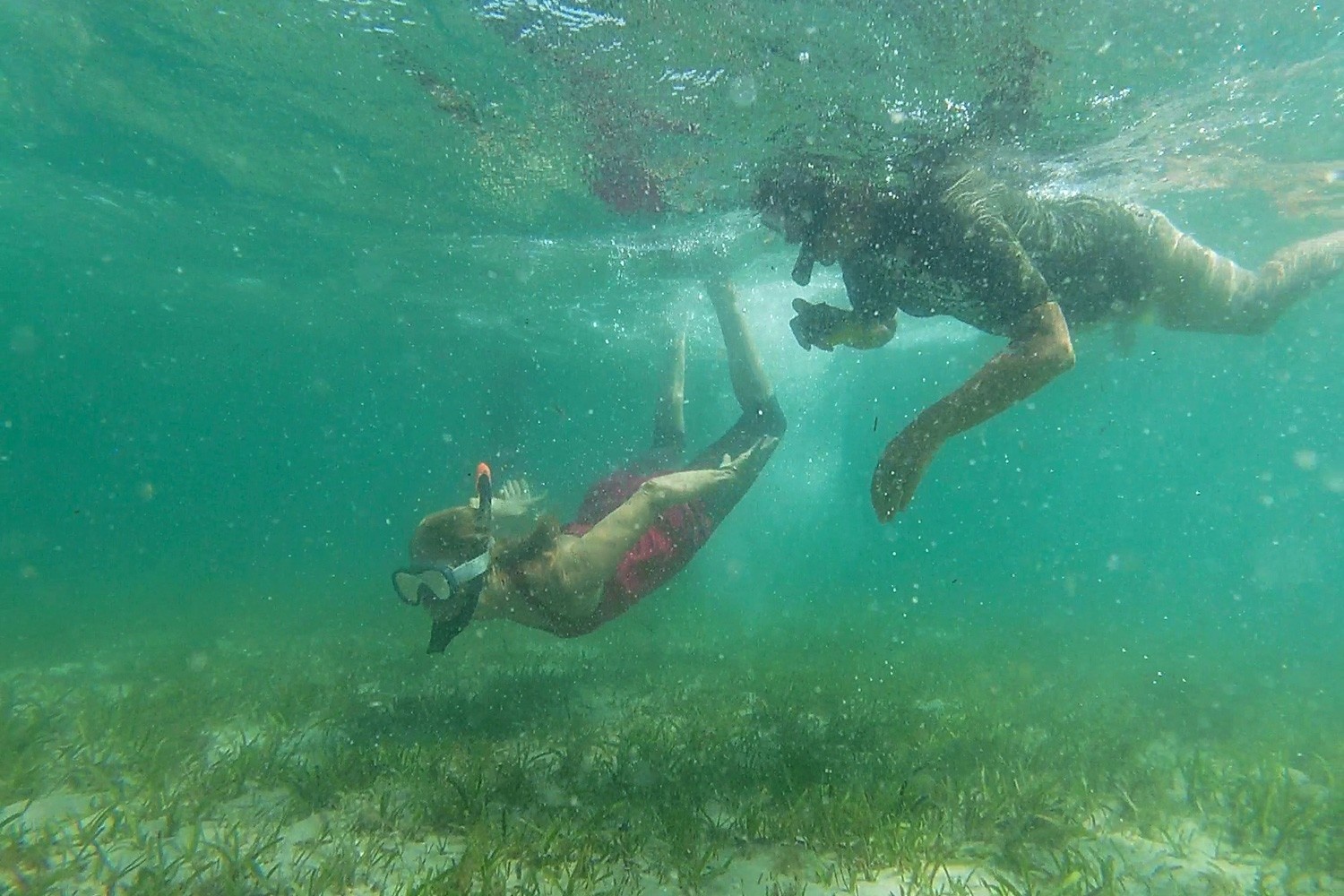
Seahorse safaris at Bazaruto. Courtesy of ParCo.
5. Bazaruto Archipelago National Park: Vilanculos, Mozambique
From rare dugongs to whale sharks, leatherback turtles, manta rays, and dolphins, the crisply clear waters off the coast of this five-island archipelago teems with marine life, making it a snorkeling and scuba diving paradise. But while the bigger species may get marquee billing, it’s one of the archipelago’s smallest marine residents that make it a conservation success story: the seahorse.
Historically, local fishermen would catch and dry seahorses for export, primarily sending them to China for use in the medicinal ingredients market. Thanks to the work of ParCo, a local grassroots initiative involved in conservation and community development, the archipelago swapped poaching for protection. Now, those same fishermen work as educated and experienced guides, taking tourists on “snorkeling seahorse safaris” through these fragile underwater habitats to observe these shy creatures in the wild. By teaching the community about seahorse conservation and creating a small-scale eco-tourism initiative, ParCo gave the village an alternative income and the seahorses a fighting chance. Proceeds from the tours further benefit local communities, from funding environmental education and sustainable fishing practices to providing sunscreen for children with albinism and handling waste recycling.
How to Explore: With a trained local guide, visitors swim through the shallows at low tide, scanning the seagrass for seahorses. The national park also offers scuba diving, dhow boat rides, and birdwatching.
Where to Stay: One of only two hotels in Mozambique to obtain the Fair Trade Tourism (FTT) certification, Bahia Mar Boutique Hotel has supported the seahorse conservation project since its inception and continues to sponsor it with monthly donations. The property also uses renewable energy, manages its waste and water, and offsets the carbon footprint from each booking through a local reforestation project.
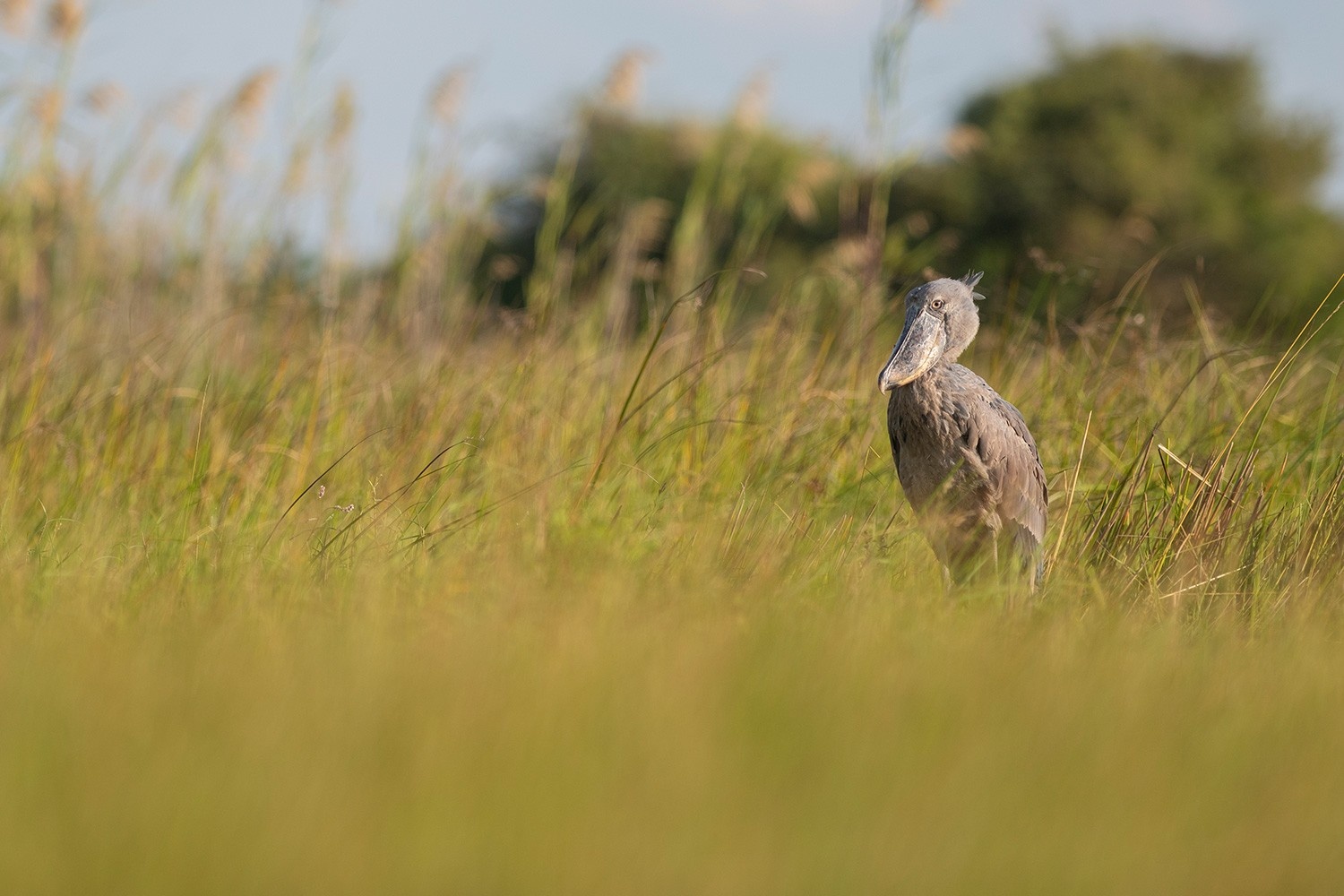
A shoebill at Bangweulu. Courtesy of Patrick Bentley.
6. Bangweulu Wetlands: Zambia
Encompassing 3,800 square miles of shimmering floodplains across northeastern Zambia, the Bangweulu Wetlands are a birdwatching bonanza. Not long ago, poaching and overfishing were draining the area of life, removing the food sources and habits of hundreds of bird species. Today, thanks to better law enforcement, sustainable fishing practices, and education programs, the ecosystem is bouncing back and is officially protected as a Game Management Area. Co-managed by NGO African Parks, the Zambian Wildlife Authority, and local chiefdoms, its GMA designation promotes balance between human and wildlife needs, allowing locals to sustainably harvest within the protected area.
Out of the 400 species of birds that either call the wetlands home or use it as a migratory stopover, several endangered species are among the most coveted sightings. Birders have the chance to see rare grey crowned cranes, endemic lechwes, and, most notably, shoebills. With global populations of shoebills estimated to be somewhere between 3,300 and 5,300 and falling, the Bangweulu Wetlands are a vital sanctuary for this prehistoric-looking bird. Between 300 and 500 live here, protected. The GMA also hosts the world’s first captive-rearing program for shoebills, with the goal of releasing all reared chicks into the wild.
How to Explore: Guided canoe excursions, available through local camps and outfitters, are the best way to get around the wetlands and see the local birdlife. The dry season between May and July is an ideal time for spotting shoebills and black lechwe.
Where to Stay: Set on a remote island in the swamps, the African Parks-run Shoebill Island Camp is an intimate four-tent camp. Activities include taking a mokoro (dugout canoe) ride through the waterways and channels, and meeting the fishermen whose livelihoods depend on these wetlands.
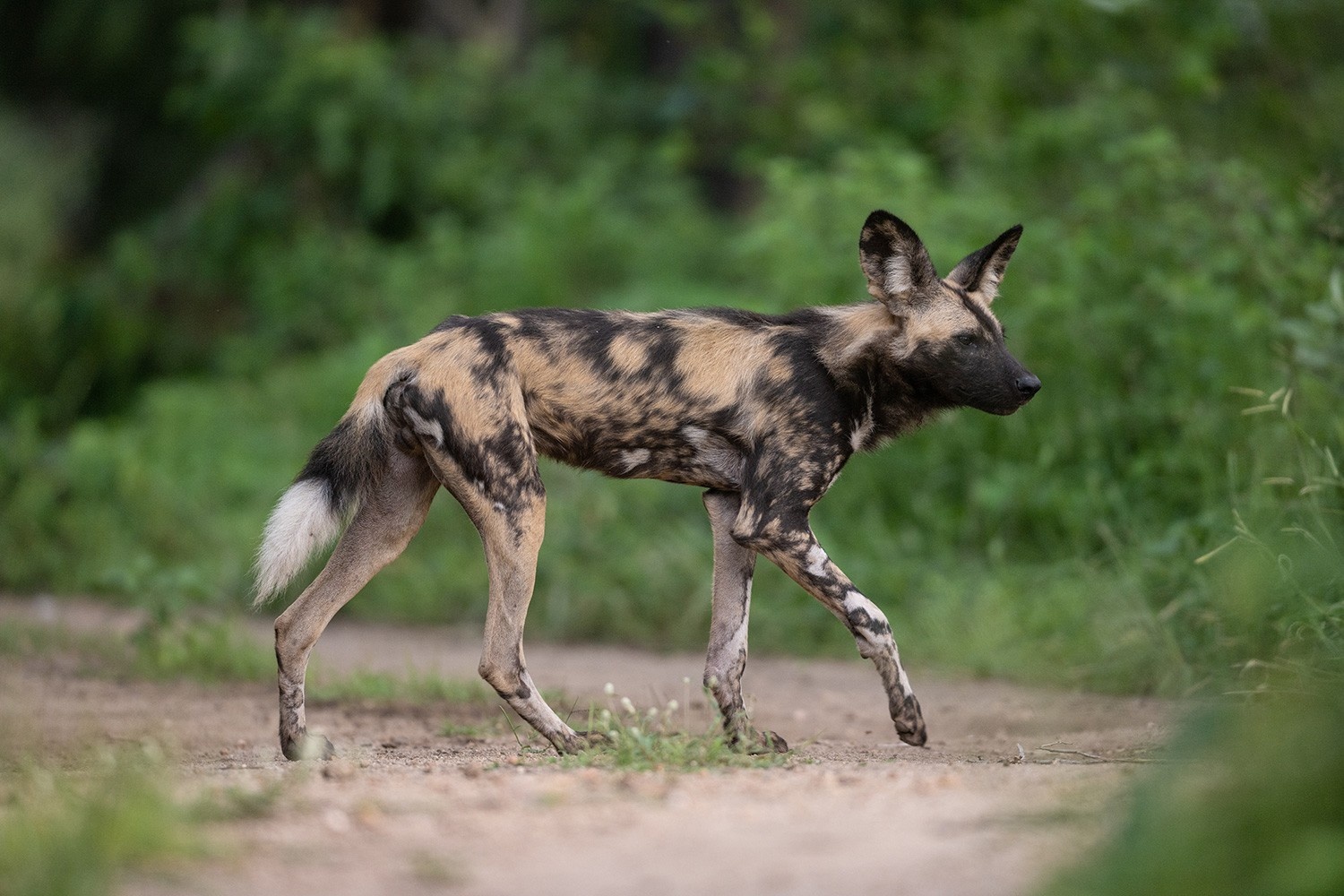
A wild dog in Majete. Courtesy of African Parks.
7. Majete Wildlife Reserve: Malawi
This protected reserve in southwestern Malawi is proof that with the right commitment, investment, and support, even the most damaged ecosystems can come back to life. Two decades ago, Malawi’s Majete Wildlife Reserve was almost empty. Poaching had wiped out nearly every living creature, and no tourists had visited in years. That changed when African Parks took over management in 2003.
Since then, more than 2,500 animals have been reintroduced, including elephants, rhinos, lions, cheetahs, and wild dogs, turning the reserve into Malawi’s flagship park. Various species have successfully started breeding, and there have been zero instances of poaching against the local rhino and elephant populations thanks to a stellar and highly trained law enforcement team.
How to Explore: Majete offers 35 miles of roads and 220 miles of 4×4 suitable tracks suitable for self-drives. Alternatively, take a guided game drive or walk.
Where to Stay: Run by African Parks, the eight comfortable, air-conditioned tented chalets at Thawale Lodge overlook a bustling waterhole in one of the reserve’s most productive game-viewing areas. For the more adventurous, a night sleeping in the elevated Nakamba Hide, which stands 27 feet above the ground next to a watering hole, lets you get unbelievably close to local fauna.
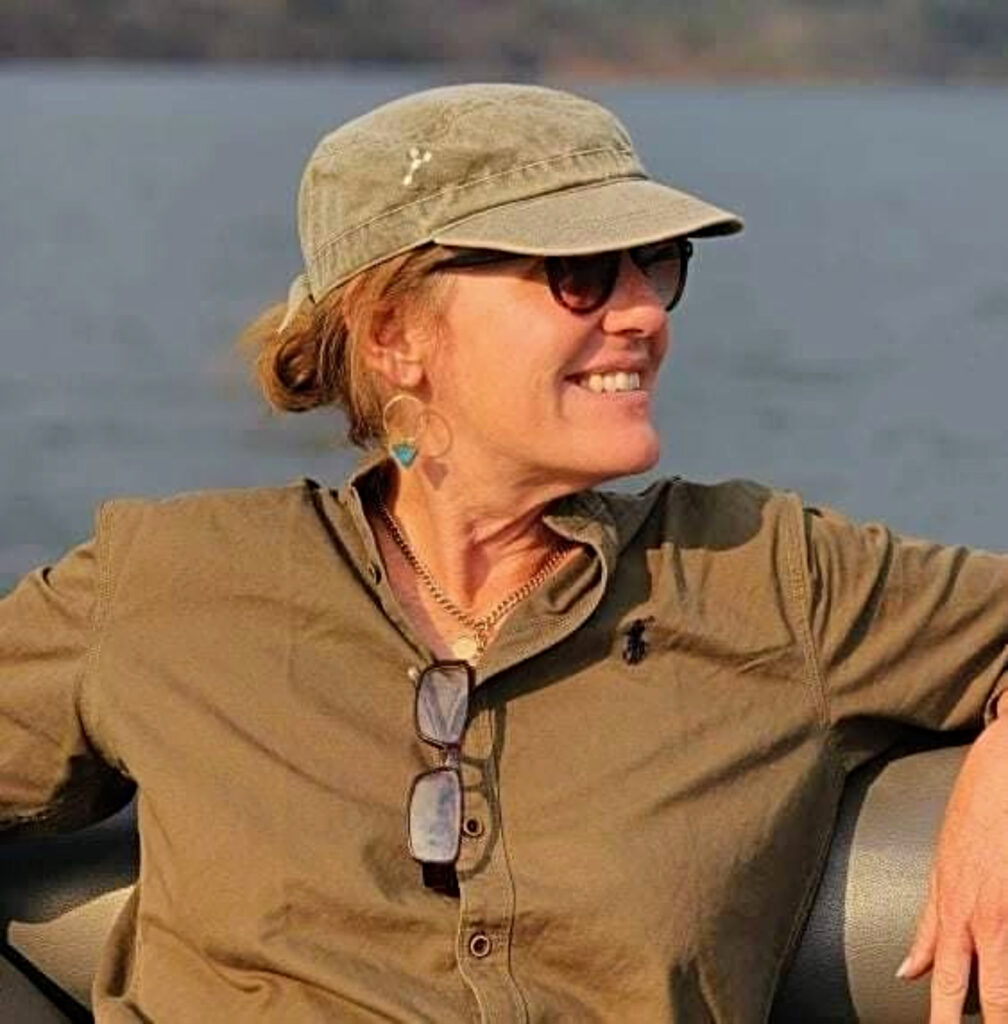
Travel writer, mountain guide, yoga teacher, trail runner and mother, Sarah Kingdom was born and brought up in Sydney, Australia. Coming to Africa at 21 she fell in love with the continent and stayed. Sarah guides on Kilimanjaro several times a year, and has lost count of how many times she has stood on the roof of Africa. She has climbed and guided around the world and now spends most of her time visiting remote places in Africa. When she is not traveling she runs a cattle ranch in Zambia with her husband. Follow Sarah on IG @sarah_kingdom_travels.
North Stars: Community Support, Heritage Value, Wildlife and Ecosystems


